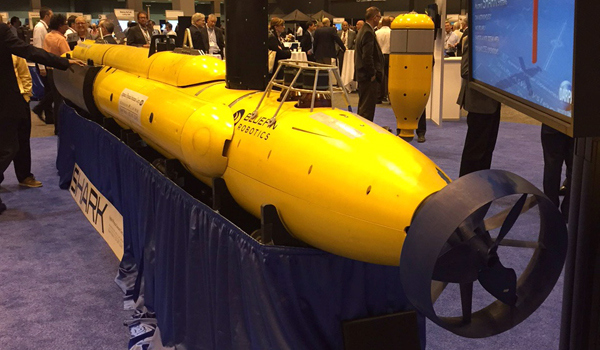For decades, there has been an unstable balance between various nuclear arsenals of countries that are hostile to each other. During the Cold War, the U.S. and the Soviet Union kept careful track of nuclear weapons possessed by the other and raced each other to keep up with perceived changes in threats. There have been a number of international nuclear weapons reduction treaties aimed at stopping this race to have nuclear superiority.
One big issue was the problem of anti-missile systems. If your enemy saw you building a system that could stop their missiles, then they might be afraid that you intended to attack them when your anti-missile system was completed. Recently, China declared that the anti-missile system that the U.S. is installing in South Korea could upset the nuclear deterrent balance in the South China Sea. Russia in threatening to put intermediate range nuclear missiles in Kalingrad in Eastern Europe to counter balance the anti-missile system that the U.S. is installing in Romania. Russia is developing what are called hypersonic reentry vehicles for nuclear warheads specifically to defeat anti-missile defense systems.
The U.S. is worried about Russian work on robot submersible drones that could carry nuclear warheads up to the coast of the continental U.S. with little possibility of interception. The Russians are worried about the new nuclear bomb being developed by the U.S. as a tactical nuclear weapon. The new bomb is steerable and highly accurate which increases in the possibility of use.
Nuclear missile-carrying submarines are an important delivery system for nuclear warheads. They are difficult to track at sea. If a country is attacked and their land based missile launch facilities and nuclear bombers are destroyed, their enemy has to take into account that the nuclear submarines of the country that was attacked could still destroy the attacking country. Back in the Ford administration, Dick Cheney and Donald Rumsfeld claimed, without any proof, that the Soviet Union had developed a new type of submarine that was impossible to detect.
Now new systems are being developed to detect and track nuclear missile-carrying submarines. With the successful development and deployment of such systems, once again, the deterrent balance in going to be challenged. A new report by the Bulletin of Atomic Scientists offers a look at some of these new submarine tracking technologies.
A program called the Distributed Agile Submarine Hunting program would scatted deep ocean sonar nodes over large areas of the ocean floor. The nodes would be able to monitor a broad field of view above to detect and track submarines. It seems to me that this type of system would be very expensive and complex. In addition, there would be ways to destroy these nodes or, at the very least, confuse them with noise to the point where they would be useless. The country that deployed them would know something had gone wrong but would not know exactly what.
Another new system is called the Submarine Hold at RisK or SHARK. These would be unmanned undersea remote controlled drones that, once a submarine had been detected by a system like the nodes mentioned above, would be able to "silently" approach and shadow it. The problem with this system is that a lot of these SHARKS would have to be spread over the areas where the nodes had been planted which would be very expensive. In addition, the new submarine detection systems would make it difficult, if not impossible, to hide the stalking drone from the submarine that was being followed.
If major nuclear power such as the U.S., China and Russia can keep up with each other in the development of these new submarine tracking systems, perhaps the balance of deterrence can be preserved. On the other hand, if one country gets too far ahead of the others, then the nuclear planners for the countries that have been left behind might decide that the best policy would be to deliver a massive nuclear first strike against the country that is in the lead. Strategic military planners might want to think twice before ramping up yet another arms race that could destabilize the nuclear deterrent balance.
SHARK drone submarine hunter:
